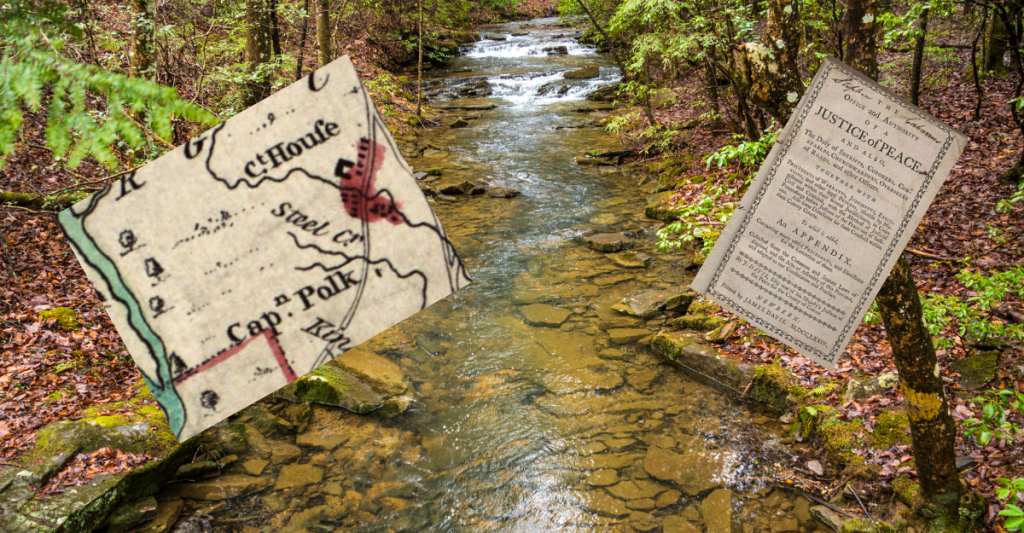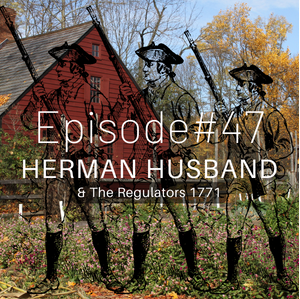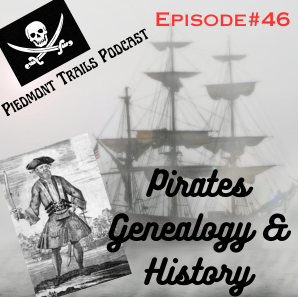Our last article covering this topic explained the people involved in our investigation. We named them in a list and discussed their probable relationship with the Mecklenburg Declaration and the Resolves dated 1775. In this chapter, we take a much closer look at Thomas Polk. McKnitt Alexander and others stated that Polk was the man who initially called for the meeting at the Charlotte courthouse on May 19th, 1775. If true, something changed Polk’s point of view from 1768 to 1775. A man known to be 100% loyal to his king and government flipped to the other side and denounced Great Britain altogether. We see a difference in Polk beginning soon after the Battle of Alamance in 1771. We cannot say with exclusive proof that the actions of Waddell and Gov. Tryon after May 16th, 1771, contributed to the change within Polk, but it appears on the surface that Polk may have at least questioned their maneuvers. In 1774, Polk made his last appearance in the NC Assembly and never looked back. He refrained from loyalty to England and began speaking out about trade issues, taxes, and the disappearing British rights. By early spring 1775, Polk was on a different path from 7 years before. By April, he was purchasing and storing large quantities of gunpowder. Letters from Boston, Massachusetts, and Philadelphia, Pennsylvania, were routed to the Polk residence and the county courthouse. What can research tell us about these actions? Thomas Polk envisioned a new country in Mecklenburg County, NC, and apparently, he knew exactly how to begin his idea.
As with any investigation, we start with what we know. Thomas Polk was the great-uncle to the 11th United States President James K. Polk. Ezekiel, Thomas Polk’s youngest brother, was grandfather to the President. William Polk, the father to Thomas and Ezekiel, arrived in North Carolina by traveling the Great Wagon Road. William’s brother, Charles Polk, was a well-established trader in Frederick County, Maryland. Charles knew the languages of the nearby Native tribes and traveled often with Christopher Gist, an agent of the Ohio Land Company.1 It was Charles, whom we believe informed William of the vast amount of land available in North Carolina. We also believe that Charles was planning a migration with his family, but his death in June 1753 prevented his plans from becoming a reality.2 Eventually, Charles’ children migrated west and settled in areas known as Kentucky and Indiana today. Christopher Gist guides thousands of families traveling into North Carolina during the 1740 and 1750 decades. The Polk family was one of these. William did not know his destiny at the time of his brother’s death. The family traveled southwest along the Great Wagon Road and joined the Trader’s Path at Salisbury, NC to present-day Mecklenburg County. William died there in 1757, four years after his brother’s death.3 William’s youngest children at the time of his death were Margaret, age fifteen, and Ezekiel, age ten. The others were grown and married with families of their own. The Polk family remains in the Piedmont area and adds historical significance to the history of Charlotte.
Getting back to Thomas Polk, he is a young man when he arrives in North Carolina. He knows about Ohio, Kentucky, and other frontier lands from his Uncle Charles. He migrates with his father to an unfamiliar territory and begins a new chapter. Thomas marries and has at least eight children. He builds his home right at the intersection of the Trader’s Path, running east to west, and the Catawba Path, running north to south in present-day Charlotte4. He becomes an active voice for his neighbors, friends, and family. With his natural leading qualities, Thomas becomes well-known in the Piedmont area. What we want to know is: What was Thomas Polk really like? We picture him as not the tallest man in the room but the loudest. We believe his voice was clear, leaving no room for doubt about his identity. Polk’s voice resonated in courtrooms, taverns, open lands during surveys, the NC Assembly, and battlefields. Behind the voice stands his thoughts, ideas, plans, and morals. There, in the heart, we find the man known as Thomas Polk.
Learning from his actions, we see a man trying to survive the backcountry of North Carolina and improve his colonial status with land, wealth, and political agenda. Thomas Polk was one of the wealthiest men in Mecklenburg County in May 1775. For a man who has a great deal to lose, he seems to set the stage for a higher rank, complete independence, and freedom from Great Britain. But did Thomas always feel this way, and if not, what changed?
The story begins with the Sugar Creek War,5 which started with the arrival of Henry Eustace McCulloh in 1764. The families purchased their land from the King of England. The families were unaware that the king had already granted the lands to Henry McCulloh Sr. many years before. Henry sent his son, Henry Eustace McCulloh, to survey the lands and sell the property to the people already settled upon them. Thomas Polk was one of the voices who denied paying for the land. He stood by his friends and neighbors, trying to negotiate and intimidate McCulloh and his friends. Letters filled with complaints reached NC Governor Tryon. Among these was a letter written by John Polk, brother to Thomas. Tryon sent a message to McCulloh to stop surveying until the NC Assembly could meet to discuss the situation. McCulloh continued his business by surveying the property lines, issuing amounts due, and processing paperwork to vacate the lands if payment was not received. McCulloh also filed a civil suit against Thomas Polk for £1,000 in damages and to remove him as Justice of the Peace. The situation climaxed on May 7th, 1765, when a party of twelve men attacked McCulloh during a survey expedition. John Frohock received a hit to the face, and Abraham Alexander was stripped and whipped. Others were injured. In September 1765, McCulloh, Frohock, and Alexander filed civil suits against forty-five individuals residing in Mecklenburg County, including Thomas Polk. The trial, scheduled for March 1766 at Salisbury Court, was postponed due to the Stamp Act and the intervention of Judge Maurice Moore. The cases remained unresolved, leading to the dismissal of the charges. Subsequently, the families engaged in transactions with McCulloh, who departed for England the following year. Thomas Polk entered into employment with McCulloh by collecting fees and assisting with surveying the remaining lands. Thomas and Henry Eustace McCulloh became friends and business partners. The Polk family benefited from the relationship, gaining land and coin currency. Thomas also gained a stronger political voice through his new connections with John Frohock and the Alexanders. The details of this merger between Polk and McCulloh deserve more attention. But for now, we will continue exploring Polk and his actions.
The next major event in the area is the NC Regulator Movement. Thomas Polk was heavily involved with the Mecklenburg County court system and was against the Regulator Movement. As the Captain of the local militia, he takes charge of protecting the courthouse and the legal proceedings in the county. Thomas assists in collecting taxes and recording them. He also assists in confiscating property and lands from the men who fail to pay their taxes by the law. Thomas also stands to benefit from taking action against the Regulators. He can negotiate directly with NC Governor Tryon to aid in their capture in exchange for Mecklenburg County disregarding the Vestry Act, positively impacting families in the area. Another part of the deal is Queen’s College, which Tryon assures approval in the coming months. The deal created a win-win situation for Polk and others, so they thought.
After the Battle of Alamance, the public atmosphere changed. Men marched in chains to Hillsborough for trial, and farms were burned to the ground by Hugh Waddell and the local militia. Thousands of families left the Piedmont area in the autumn of 1771. News from Boston and other colonies shared the abuse of British power hovering over the colonists and their rights. We believe Thomas Polk began to shift his thoughts at this moment. He still requests the approval of the Queen’s College in the NC Assembly. Thomas also petitions funds for the Mecklenburg County courthouse and jail. The Vestry Act is back as law in the county, and Thomas petitions to remove it. He also petitions the survey boundary for the North Carolina/South Carolina border. After the Battle of Alamance, it appears his focus stays on a local level while paying close attention to the news from other colonies.

In 1772, Thomas was part of the surveying team to determine the boundaries between North Carolina and South Carolina. By 1774, Polk makes his last appearance in the NC Assembly. He begins stockpiling gunpowder and other supplies. Thomas corresponds frequently with friends in Philadelphia, Boston, Winchester, Charleston, and many other places. He hears of the final decision on the Queen’s College in the autumn of 1774 as a definite NO from the King of England. It appears that Thomas Polk has adjusted his plans to a new strategy.
In May 1775, Thomas Polk organized a meeting at the Mecklenburg courthouse. On May 20th, 1775, the meeting resulted in the Mecklenburg Declaration and the Mecklenburg Resolves followed. While the Second Continental Congress passed the Olive Branch Petition on July 5th, 1775, Mecklenburg County, North Carolina, proclaimed freedom from British rule. Even if doubt looms in the air about the Mecklenburg Declaration, the Mecklenburg Resolves are factual, documented and proven. Once the project has completed, we hope to prove without a doubt the true existence of the Mecklenburg Declaration and the reasons why they remain hidden today. We will have much more on Thomas Polk, such as his relationship with Horatio Gates, George Washington, Edmond Fanning, John Dunn, Waightstill Avery, the Alexander family, other members of the NC Assembly as we reveal our discoveries with the Mecklenburg Declarations Project. Stay tuned for our next release and Enjoy Your Journey to the Past!
- Gist, Christopher Journal dated 1750 to 1759-accompanied with various letters, notes from the Ohio Land Company, and personal documentation. ↩︎
- Kester, John G. “The Other Polks: The Descendants of Charles Polke the Indian Trader” published by New Elm Press 2019 pp. 43-51 ↩︎
- The original cemetery was located in present-day Pineville, NC. It was later moved to the James K. Polk Historic Site. The original headstone was placed in storage for future restoration. We have not been notified if the restoration has been completed. ↩︎
- Ervington Shervill owned the original property of Thomas Polk adjoining James Spratt along the Trader’s Path consisting of 170 acres. Deed Book 2 p. 117 dated March 28, 1755. ↩︎
- Sellers, Charles G. “Private Profits and British Colonial Policy: The Speculations of Henry McCulloh” William & Mary Quarterly Volume 8 published October 1951. Williams, Jim “The Sugar Creek War” Dandelion Press Mecklenburg Historical Association Volume 26, Number 4 Published September, October 2020 ↩︎
Categories: Featured Articles, North Carolina










